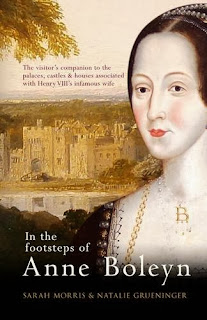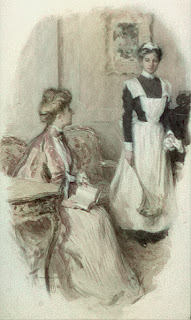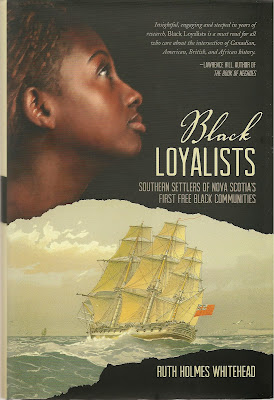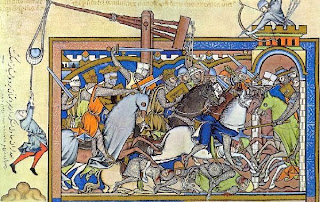I was going to write an entirely different post today about Remembrance Day – I had it fully imagined, and even half written – but something else has swept it off my mental desk. Something that’s still about the world wars, in part, and most certainly about remembrance: it’s a juxtaposition, in fact, of three different things.
First, a picture appeared last week in a newspaper’s
online gallery – it was a copy of this picture of a woman and child:
This photograph is from a Victorian book called Street Life in London, which documented the lives of some of the city’s poorest citizens. It was published in 1877, with text by Adolphe Smith and photographs by John Thomson. A rare original copy is currently up for auction (hence the gallery in the newspaper).
I know this book well, because I bought a facsimile copy of it some years ago (you can find details of the same edition here). Every one of its photographs and each accompanying piece of text is fascinating but, right from the start, one image grabbed me most particularly (and painfully): this same photograph. In Street Life in London it is described, not as a portrait of “A woman and child”, as the gallery caption puts it, but as a picture of a “crawler” – a horribly vivid term. The accompanying article defines the word like this:
Huddled together on the workhouse steps in Short’s Gardens, those wrecks of humanity, the Crawlers of St Giles’s, may be seen both day and night seeking mutual warmth and mutual consolation in their extreme misery. As a rule, they are old women reduced by vice [though neither case the text goes on to describe involves any vice at all]and poverty to that degree of wretchedness which destroys even the energy to beg. They have not the strength to struggle for bread…
[Street Life in London by A. Smith & J. Thomson, p.108]
Adolphe Smith’s text then tells the stories of two widows who, through ill health, have lost their ability to work, and therefore also their lodgings.
The woman [in the picture], though once able to earn money as a tailoress, was obliged to abandon that style of work in consequence of her weak eyesight, and now her great ambition is to “go out scrubbing”. But who will employ even for this menial purpose, a woman who has no home, no address to give, and sleeps on the workhouse steps when she cannot gain admittance into the casual ward?
[Street Life in London, p.110]
(This same workhouse, Smith later notes, punishes with imprisonment and hard labour anyone who seeks refuge in its ‘casual ward’ three times in the same month.)
At the time this picture was taken, the woman was earning a little bread and tea by looking after the child pictured with her, while its mother (who had formerly been a “crawler” living on the same doorstep) worked in a coffee shop. Because the woman had no home, the child was “kept out in the streets through all weathers.” She told Smith, “it pushes its little head under my chin when it is very cold, and cuddles up to me, so that it keeps me warm as well as itself.” Smith reported, however, that the child was wheezing and coughing – its health was clearly suffering from the exposure.
The situation is almost unbearable to contemplate. And although I was glad to be reminded, through seeing this picture, of this interesting book sitting on my shelves, it was a painful reminder too.
But I mentioned a juxtaposition, didn’t I?
So, I saw this picture last week. Then, a couple of days later, I happened to read two articles by two different writers.
The first was a piece by Harry Leslie Smith, entitled ‘This year, I will wear a poppy for the last time.’ (You can read it here.) Harry is 90 years old, a survivor of the Great Depression and a WWII RAF veteran. In this thoughtful and passionately argued column, he talks, among other things, of how many of the war dead from the First World War were poor:
My uncle and many of my relatives died in [the First World War] and they weren't officers or NCOs; they were simple Tommies. They were like the hundreds of thousands of other boys who were sent to their slaughter by a government that didn't care to represent their citizens if they were working poor and under-educated.
[The Guardian, 8th November 2013]
Harry feels that our modern view of World War I – which will feature in a lot of media coverage next year when the centenary of the outbreak is marked – is losing touch with the harsh realities of the soldiers' lives away from the trenches.
We must remember that the historical past of this country is not like an episode of Downton Abbey… I can attest that life for most people was spent in abject poverty where one laboured under brutal working conditions for little pay and lived in houses not fit to kennel a dog today. We must remember that the war was fought by the working classes who comprised 80% of Britain's population in 1913.
[The Guardian, 8th November 2013]
Harry argues that it behoves us at this time of commemoration to consider the home lives of the soldiers, and the lives of the families they left behind, both during the war and afterwards. Those soldiers, after all, came from the same society in which the “crawlers” lived. Although 37 years separated the publication of Street Life in London from the beginning of the First World War, no revolution in social care had occurred in the meantime, and many people still lived in life-threatening poverty. In Love and Toil – Motherhood in Outcast London, 1870-1918 (OUP, 1993), Prof. Ellen Ross says that “starvation deaths continued to be a regular occurrence even in the kinder years after 1870.” Indeed, the cases detailed in her book show just how often poor mothers went without sustenance in order to feed their children – or the children of their neighbours. In the summer of 1905, for example, when a poor widow named Annie Higgs was found dead of starvation in Long Street, Shoreditch, it was discovered that her three young children had been kept alive for many weeks by food offerings from the surrounding poor households.
Can we truly imagine, now, the life of the “crawler” or of poor Annie Higgs? Can we truly imagine the type of country this was before the creation of the welfare state, when people were found dead in the street for want of food? Looking at the abject poor in other countries, perhaps we can. But even in this country, those lives and deaths occurred not so very long ago. One of my great-grandfathers was killed in an industrial accident one day in May 1909, leaving his wife with five children to support, and no income – no pension, no compensation, no child benefit, no help of any kind whatsoever. They got through – goodness knows how – without recourse to the dreaded workhouse, but my grandmother (who was 9 at the time of the accident) bore the psychological scars of the experience to the end of her days.
Many of the Tommies Harry Leslie Smith writes about returned from the unimaginable horrors of the trenches, only to be faced with unemployment and homelessness; the governments of the 1920s were unable to deliver a “land fit for heroes”. No wonder that, two decades later, the overwhelming feeling following the end of the Second World War was that the whole of society must take responsibility for the whole of its citizenry. The push for social reform and the creation of a welfare state gained huge support in 1945, not least from members of the armed services, and resulted in a shock defeat at the polls for Winston Churchill – despite his huge achievements as wartime leader.
Would it be fair to say that the generation that fought in World War II decided that life must be viable for all citizens: for the child born to the poorest family; for the aged and the infirm; for those permanently disabled by war – and for all people with disabilities; for those whose mental health had been damaged by war – and for all people with mental health problems?
And yet… back to my juxtaposition. There was the photograph of the Victorian “crawler”. There was the article on poverty behind the trenches. And the third thing?
The third thing was an article by the journalist Polly Toynbee, about the current government’s 'benefit sanctions' system, which is a system of docking benefits or taking them away altogether from claimants who are deemed unworthy (you can read the article here). The Department of Work and Pensions has recently published statistics showing that, for example, nearly 600,000 jobseeker's allowance claimants had their benefits docked or stopped in the eight-month period up to June 2013.
The idea behind this new, tougher system is to make sure people are actively looking for work. Toynbee, however, has discovered from speaking to job centre staff that they are specifically encouraged to find ways to stop people’s benefits regardless of the situation. Staff are given sanction targets to meet, and punished if they fall below them. Toynbee writes:
"You park your conscience at the door," [one job centre worker] tells me. "Sanctions are applied for anything at all to hit the targets."
…People are often sanctioned for a no-show at appointments they never knew about. If they call to rearrange an appointment, "we don't answer the phones, so that's a bit tricky". A flowchart on the wall shows how to raise a successful sanction.
…Someone with a disability who is knocked off employment support allowance can reclaim while awaiting an appeal. "But we are explicitly forbidden from telling them that – in black and white in the briefing pack – so these often very ill, quite confused and low-capability people are easy meat."[The Guardian, 8thNovember 2013]
The effects of these sanctions can be utterly disastrous. I don’t think I’ll ever forget reading about the case two years ago of Mark Mullins and his partner Helen, who killed themselves rather than carry on with their lives of desperate struggle. And, tragically, they have not been the only ones.
Now, two years later, the number of people in situations of desperate difficulty is rising. As people lose their income, too often – like the “crawler” in John Thomson’s photograph – they also lose their homes. The charity Crisis says on its website:
After years of declining trends, 2010 marked the turning point when all forms of homelessness began to rise. However, it is likely that homelessness will increase yet further, as the delayed effects of the economic downturn, cuts to housing benefit and other reforms all start to bite.
The same website states that rough-sleeping figures for London have shown a 62% rise in the last 2 years.
Harry Leslie Smith argues that though we wear poppies and pay our respects to the dead of the two world wars (as well as other conflicts), we are in grave danger of forgetting the ideals of his generation, of undoing their hard-won achievements and of ignoring their hard-earned wisdom.
The “crawler” photograph is a picture of what poverty looked like before that same wartime generation decided – through the social reforms made after World War II – that a civilized society cannotview its members solely as economic units (worthless unless able to produce financial capital), and must care for its most vulnerable citizens. How can we say we are truly remembering and honouring that generation when we are dismantling precisely what they – who sacrificed so much – worked so hard to build?
![]() |
Photograph by Alan Stanton (Nation Wide, Nation Deep) [CC-BY-SA-2.0 (http://creativecommons.org
/licenses/by-sa/2.0)], via Wikimedia Commons |
The website for Shelter (England) is
here.
The website for Shelter (Scotland) is
here.
The website for Crisis is
here.
Homeless Link's website is
here.
www.hmcastor.com



























































